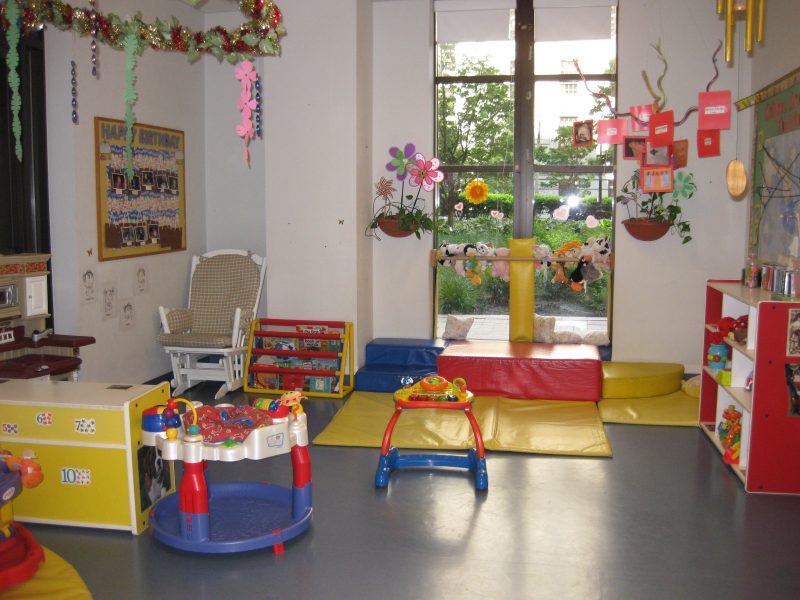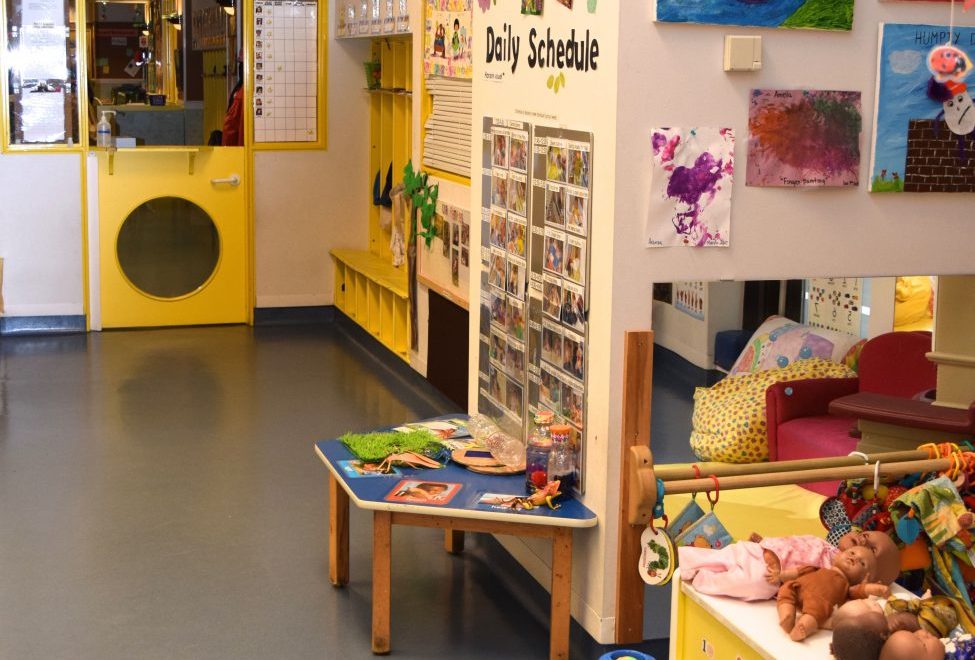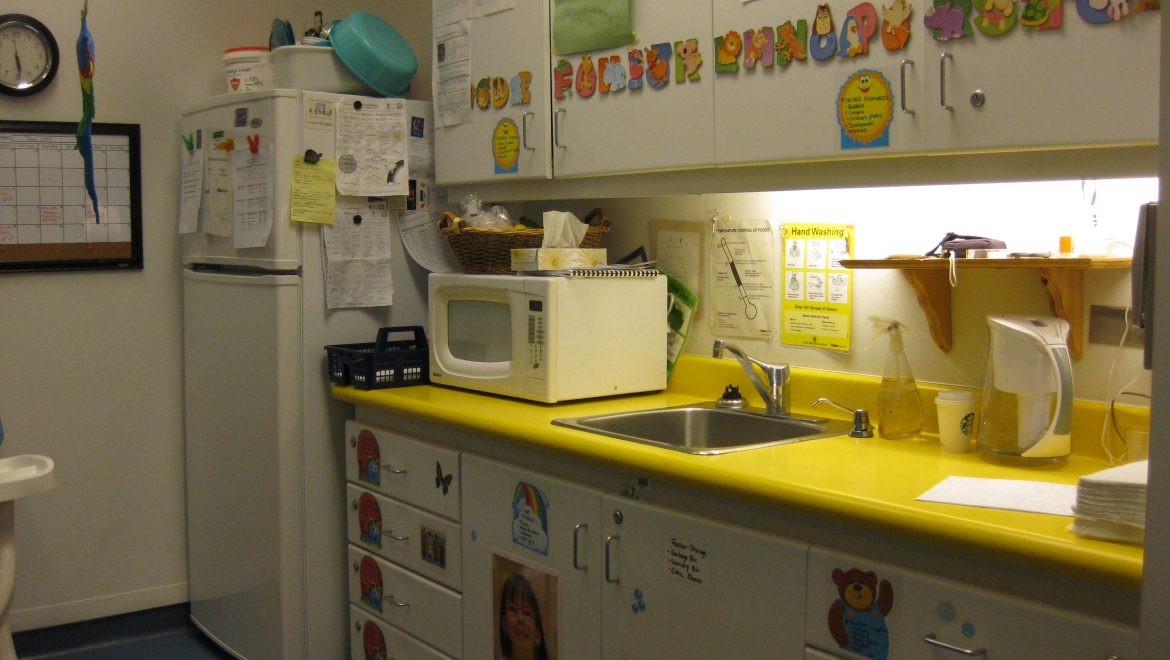We hope you and your child will enjoy your time with us. If you have any questions or concerns, please feel free to talk to any of the staff. There is four staff in the Infant Room and we will all be bonding with your baby and are happy to answer your questions and help you become acquainted to the program, schedule and routines. One of our team will be your child’s primary caregiver and will take on the greater responsibility of caring for, feeding, changing and communicating with you, however all the staff will be equally involved with you and your baby at all times.
As in all of the groups at Life-Bridge we have student teachers doing field placements here who provide additional care and support in the Infant room. They are always supervised by one of our team.
Infant Curriculum
In the Infant Room, daily experiences focus on developmental domains or on the practice of specific skills, and are planned around spontaneous activities that are likely to occur in the context of daily care and routines. We consider the care of the child (feeding, sleeping, eating, nurturing) equally important and equal to curriculum. In the Infant Room, activities are planned to support the following domains and skills: language, cognitive, social, emotional, fine-motor, and gross-motor development. Our activities are integrated into the daily routines in a non rushed environment supporting our goal of ensuring that calm interactions are more important that the schedule of the day and the timetable.
Daily Information Charts
The charts are kept in your child’s cubby. Parents are asked to fill out the chart upon arrival to provide the staff with more information. For example, any medication that the child may be taking, last diaper changes, last feeding, wake up time, etc.
Parents are also asked to write down the arrival time and expected departure time, and sign the chart at the end of the day with the actual departure time. Please let us know, with a phone call, if your schedule changes on a given day.
NOTE: The centre opens are 7:30am and closes at 6:00pm. Parents must give themselves ample time to talk to the staff about their child’s day and to get ready to leave the centre by closing time.
The Sleep Room
We have ten cribs in the sleep room. We change and wash the sheets at the end of each week or as required and blankets are sent home on Friday’s to be washed for the following week. Children can bring blankets, soothers, and/or a soft comfort toy for their naps.
NOTE: It is required by the Metro Criteria that all your child’s belongings be LABELLED clearly to avoid mix-ups. In addition, we ask that any irreplaceable items, such as special toys or items from grandparents, NOT to be brought to the daycare to avoid the loss of a special item.
The Eating Area
In the eating area we have four highchairs, and a table that can seat 5-10 chairs. Snacks and lunches are served based on each child’s individual schedule. Morning snack is served between 8:00-9:30am. Lunch is served between 11:15am-12:30pm, and afternoon snack is served between 3:00pm-3:45pm. Each child has his/her own spot in the fridge, and cubby in the cupboard above the counter with his/her name on them to store bottles, cups, and food from home.
For children that are still eating jar foods, parents are asked to store the jars in their child’s basket in the cupboard. Food that is stored in the fridge must be kept in a plastic microwavable container to avoid any broken jars. The containers are rinsed then sent home at the end of each day.
Children who are starting solids are given a copy of the daycare menu. Parents are asked to highlight/check off the items that their child CAN eat. The menu must be labelled with the child’s name and is then posted on the fridge. Formula should be premixed and brought from home to be heated in hot water, or as specified by parents (microwave).
IMPORTANT NOTE: If your child is trying a particular food for the first time, please try the food at home first to monitor for any allergic reaction that may occur.
The Changing Area
In the Infant Change Room, we have a change table with a soft change pad which is sanitized after every diaper change, and the staff and child’s hands are washed after every change.
Children are NOT to be left on the table unattended! We have a playpen to sit the child when the staff is cleaning the change pad and washing their hands.
Diapers are changed every 2 ½-3hours, and whenever there is a bowel movement (BM) or as specified by parents. Children have their own bin for diapers, wipes, cream, etc. Extra diapers are labelled and kept under the change table. Soiled clothes are placed in plastic bags and sent home at the end of the day. The requirement of the Public Health Department is that handling of soiled diapers and clothing should be as minimal as possible to prevent the spread of infection.
Quiet Rooms
A rocking chair is available in the sleep room, and in the playroom for nursing mothers who wish to breast fed their child. An additional room is also located down the hall (Resource Library) and can be used when not in use.
Emergent Curriculum
Early Learning for Every Child Today “ELECT” was put together by an expert panel for Early Childhood Education in the Province of Ontario. Each child will have a booklet in his/her cubby. The teachers will document observations of developmental abilities, and interests on a regular basis. Parents are also invited to document observations that they see at home. This booklet is a wonderful tool for the teachers as it will assist them in implementing an Emergent Curriculum. An Emergent Curriculum is one which establishes a program of activities from the developmental stage and the interests of the child. Activities which are relevant to a child’s development and interest will be the ones a child learns best from. You can Google EARLY LEARNING for EVERY CHILD TODAY to see hill publication.
The Play Area and Walks
Toys and mats are disinfected everyday and toys are rotated every week. The older, walking children are taken out to the playground or gym (weather permitting) and the younger children are either napping, on a walk, or playing in the gym. PLEASE make sure that your child comes properly dressed for outdoor activities. For example, sunscreen and sun hats during the summer; and warm coats, hats, boots, scarves and mittens during the winter months.
Here is a checklist of things to bring to daycare:
- Blanket, pacifier (if used), and/or comfort toy
- Indoor and outdoor shoes
- Water cup and bottle (plastic only)
- Change of clothes
- Baby food, formula, cereal, etc.
- Diapers, wipes, cream, etc.
Spring/Summer:
- Rain boots
- Splash pants
- Hat
- Light jacket
- Sunscreen
Fall/Winter:
- Hat
- Coat
- Snow pants
- Gloves/mittens
- Scarves
***PLEASE MAKE SURE ALL ITEMS ARE LABELLED WITH YOUR CHILD’S NAME***
Illness/Fever
If a child has a fever, we will call the parent immediately. If the child is coping parents may choose to give medication to their child to get them through the day. The teachers ARE NOT permitted to administer over-the-counter medication; thus, we ask parents not to keep any medication in their child’s cubby or at the centre. If the fever persists or rises or is accompanied by other symptoms causing the child to have difficulty coping, we will ask parents to come as soon as possible and to take the child to see a doctor to ensure that any communicable diseases are diagnosed. Children who are unable to cope without one to one attention during the typical activities of a day, should be kept at home to rest and recuperate. If, during the day, a child does not have a fever, yet is restless, lethargic, crying constantly, and needs one-to-one attention, we will call the parent to pick up their child.
Children who have symptoms of vomiting, diarrhoea, pink eye, or a contagious reportable illness must be kept at home. (Refer to the Canadian Paediatric document in your welcome package entitled “Well Beings” for information on when children should be excluded from child care.)
As stated in the Parent Handbook, “if a child requires individual care that restricts him/her from participation in the program” (ex: gross motor/playground activities, walks, etc.) the child must be kept at home.
Daycare is “group care,” and it is difficult for a staff member to focus mainly on one child because it would not be fair for the other children.
The ratio in the Infant Room is 1:3.
Young children under the age of 2 ½ do not yet have a strong immune system, and when exposed to other children, may become ill frequently. It is not uncommon for young children to be sick ten times or more in their first two years. It is therefore very important for parents to have a pre-arranged back up plan for alternative care when their child is ill. For the health and well-being of all the children in the Infant group, parents should understand that their child needs down time to recuperate when ill and must also recognize that when they bring a sick child to child care, they are increasing the spread of infection to the other children.
The above is the main reason why it is important for children who are sick to remain at home until they are better, to prevent the spread of infection.










Add Comment